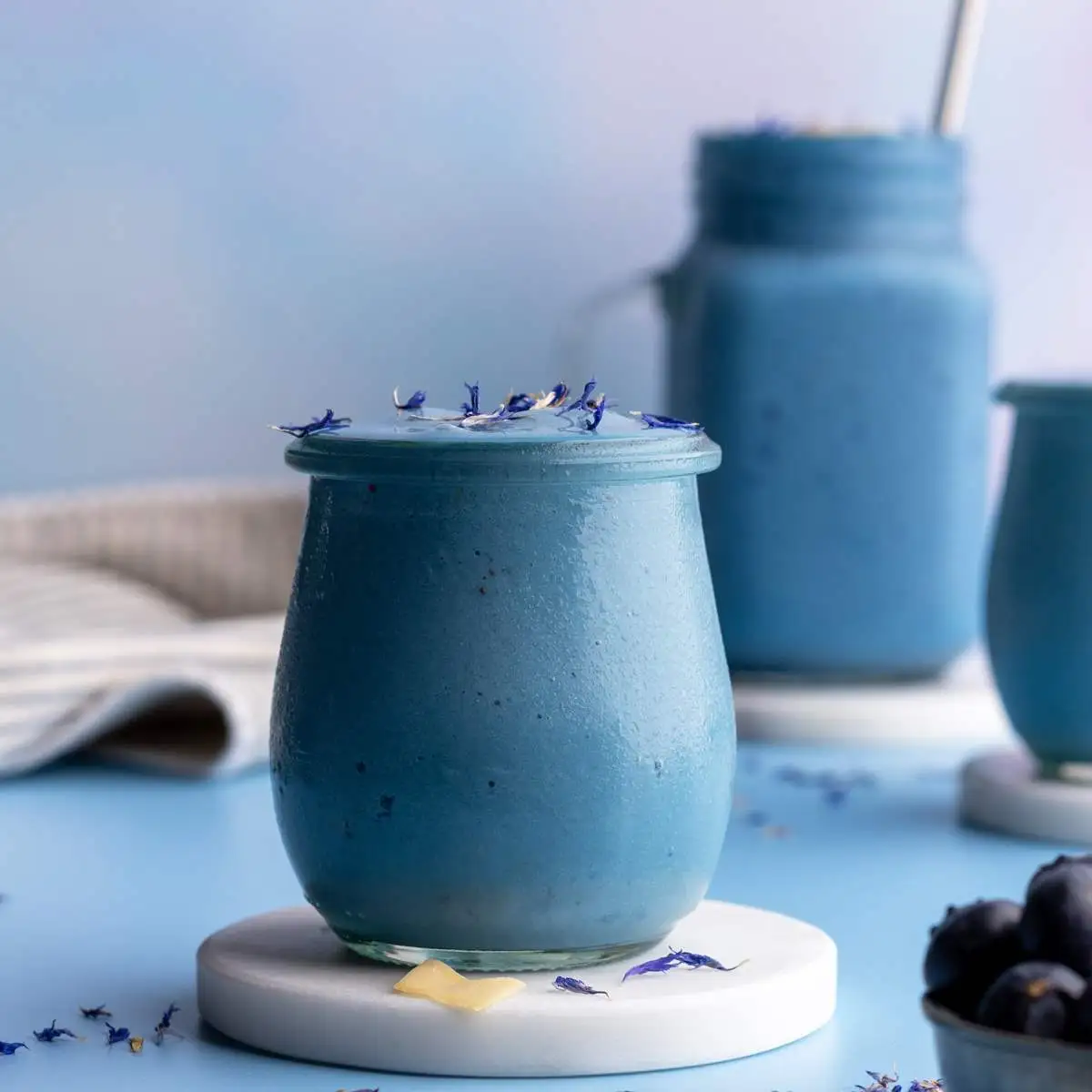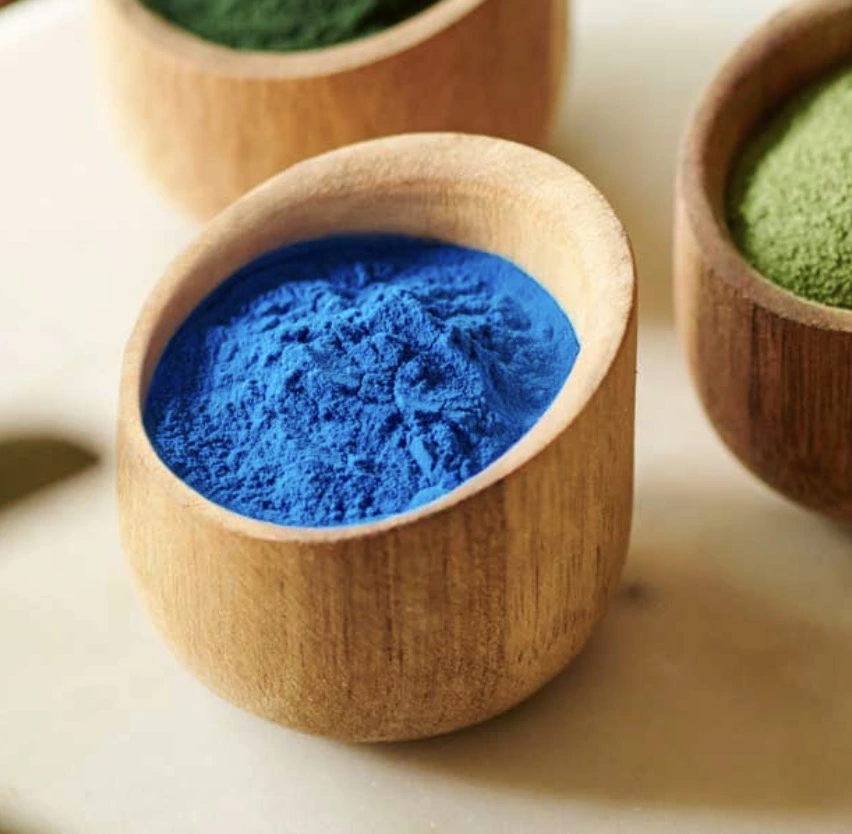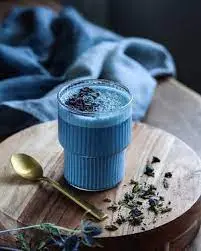How does temperature influence phycocyanin denaturation?
Phycocyanin, the vibrant blue pigment-protein complex found in blue-green algae like spirulina, has garnered significant attention in the food and nutraceutical industries. As a natural colorant and potent antioxidant, phycocyanin has become a popular ingredient in various products. However, its sensitivity to temperature poses challenges for manufacturers and consumers alike. In this comprehensive guide, we'll explore the intricate relationship between temperature and phycocyanin denaturation, providing valuable insights for optimal storage, processing, and usage of this remarkable compound.
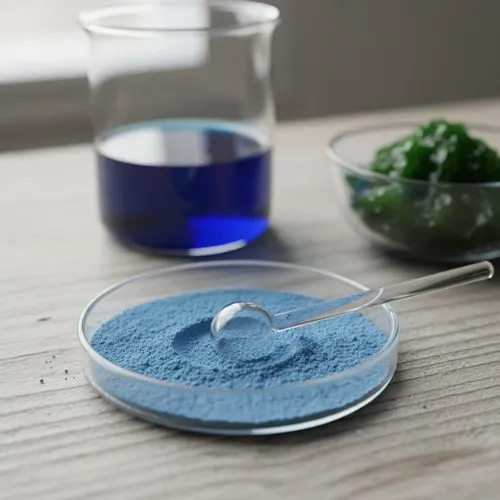
Optimal storage to prevent phycocyanin loss
Proper storage is crucial for maintaining the integrity and potency of phycocyanin. Let's delve into the key factors that influence phycocyanin stability during storage and the best practices to preserve its quality.
Temperature-controlled environments
Keeping phycocyanin at a stable, cool temperature is essential for maintaining its stability and potency. The optimal storage range for phycocyanin powder is between 2°C and 8°C (35.6°F to 46.4°F), which helps limit molecular activity and prevent denaturation. For both short-term and long-term preservation, refrigeration is highly recommended. Proper temperature control ensures the pigment retains its bioactive properties, color, and effectiveness, making it crucial for phycocyanin supplements and extracts.
Light protection measures
Although temperature is a primary concern, light exposure also plays a significant role in phycocyanin degradation. To protect the pigment, store phycocyanin products in opaque or amber-colored containers that block light. When combined with proper temperature management, this approach significantly enhances the preservation of phycocyanin’s stability, color, and bioactive potency. By addressing both temperature and light, you create optimal conditions that help maintain the quality and effectiveness of phycocyanin supplements and extracts over time.
Humidity considerations
Moisture can speed up phycocyanin denaturation, particularly when combined with higher temperatures. To prevent this, phycocyanin powder should be stored in airtight containers along with desiccants. This setup maintains a low-humidity environment, protecting the compound from degradation. By controlling both moisture and temperature, the shelf life of phycocyanin is extended, and its vibrant blue color is preserved, ensuring that the pigment retains its stability, potency, and visual appeal over time.
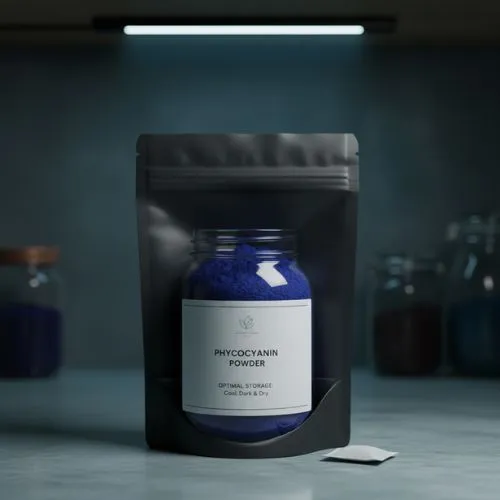
Effects of heat on phycocyanin stability
Understanding how heat impacts phycocyanin is crucial for both manufacturers and consumers. Let's examine the various ways temperature influences this delicate compound.
Thermal denaturation kinetics
As temperatures rise, phycocyanin molecules begin to unfold and lose their native structure. This process, known as thermal denaturation, occurs gradually but accelerates significantly at higher temperatures. Research has shown that phycocyanin starts to denature at temperatures above 40°C (104°F), with rapid degradation occurring beyond 60°C (140°F). This thermal sensitivity underscores the importance of careful temperature control during processing and storage.
Color changes and loss of functionality
One of the most visible effects of heat-induced phycocyanin denaturation is the loss of its characteristic blue color. As the protein structure unfolds, the chromophore responsible for the blue hue becomes exposed and unstable. This not only affects the aesthetic appeal of phycocyanin-containing products but also indicates a reduction in its functional properties, including its antioxidant capacity and potential health benefits.
Impact on bioavailability
Heat exposure can alter the molecular structure of phycocyanin, potentially affecting its bioavailability. Studies have suggested that moderate heat treatment may actually enhance the digestibility of phycocyanin, making it more accessible to the body. However, excessive heat can lead to the formation of aggregates or completely denature the protein, significantly reducing its bioavailability and nutritional value.
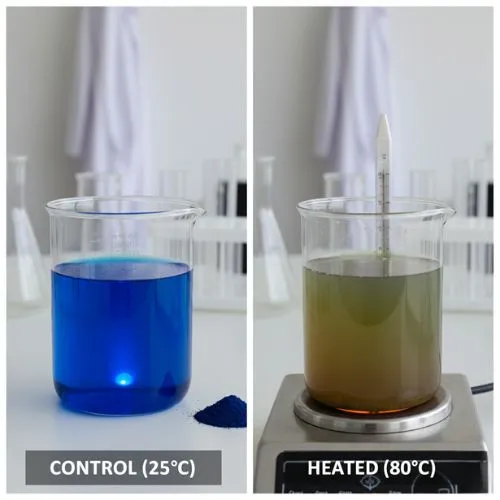
Tips to maintain phycocyanin color and activity
Armed with knowledge about phycocyanin's temperature sensitivity, let's explore practical strategies to preserve its color and activity in various applications.
Cold processing techniques
When incorporating phycocyanin into food or beverage products, opt for cold processing methods whenever possible. This approach minimizes heat exposure and helps retain the compound's vibrant color and functional properties. For instance, in smoothie or juice applications, add phycocyanin powder or extract at the end of the blending process to reduce thermal stress.
pH optimization
While our primary focus is on temperature, it's worth noting that pH also plays a crucial role in phycocyanin stability. The compound is most stable in slightly acidic to neutral conditions (pH 5-7). When formulating products, consider adjusting the pH to this optimal range to enhance phycocyanin's resistance to thermal denaturation.
Encapsulation and protective additives
Innovative approaches like microencapsulation can provide an additional layer of protection for phycocyanin against temperature fluctuations. By encasing phycocyanin molecules within a protective matrix, manufacturers can enhance their stability during processing and storage. Additionally, the use of natural antioxidants or stabilizers can help mitigate the effects of heat-induced oxidation and denaturation.
Conclusion
Temperature plays a pivotal role in the stability and functionality of phycocyanin. By understanding the intricate relationship between heat and phycocyanin denaturation, we can implement effective strategies to preserve this valuable compound. From optimal storage conditions to innovative processing techniques, the key lies in minimizing thermal stress while maximizing phycocyanin's potential.
At Yangge Biotech Co., Ltd., we are committed to providing high-quality phycocyanin products that maintain their potency and vibrant color. Our state-of-the-art facilities and rigorous quality control measures ensure that our phycocyanin supplements and extracts are handled with the utmost care. Whether you're a food manufacturer, nutraceutical producer, or health-conscious consumer, we have the expertise to meet your phycocyanin needs. To learn more about our premium phycocyanin products and how we can support your projects, please contact us at info@yanggebiotech.com.
FAQ
Q: Can we get some samples to test before purchasing?
A: Of course, we can provide free samples of 20 to 100 grams, but the shipping cost is at the customer's expense. The shipping cost can be deducted from the next order, or the samples can be sent through your courier account.
Q: Do your products have relevant certifications?
A: Yes, our products are certified for HALAL, ISO, HACCP, Kosher, and other certifications.
Q: What is the minimum order quantity (MOQ)?
A: Small batches of samples can be customized according to your requirements.
Q: Do you offer OEM and ODM services? Can the formula be customized based on our own?
A: Of course, we provide ODM and OEM services to many customers. Our product range includes softgels, capsules, tablets, sachets, granules, and private label services. Simply contact us and let us know your requirements. Our experienced R&D team can also develop new products with specific formulas.
Please contact us to design your own branded products.
Q: How do you handle quality complaints?
A: First, we have a comprehensive quality control SOP. We provide authoritative third-party inspection reports for almost all products before shipment to minimize the possibility of quality issues. Second, we have a comprehensive return and exchange procedure. If there is a genuine quality dispute, we will strictly follow the SOP.
Q: How do you ship? How long does delivery take?
A: For small orders, we typically use DHL, UPS, EMS, FedEx, or TNT. Delivery typically takes 3-7 days. We also offer air and sea freight services. We have a strong freight forwarding team and can provide you with a one-stop service, including DDP and DDU.
Q: What are your payment terms?
A: 100% prepayment, payable by T/T, Western Union, MoneyGram, or PayPal.
Q: What is the shelf life of your products?
A: 2 years with proper storage.
Q: Is the packaging environmentally friendly?
A: We attach great importance to environmental protection and are constantly improving our product packaging. Some products are packaged in recyclable paper. Packaging materials are carefully selected to ensure product safety during transportation and storage, and to minimize environmental impact. We are committed to achieving a balance between environmental friendliness and practicality in our product packaging, and to contributing to sustainable development.
References
1. Johnson, E. M., & Kumar, S. (2021). Thermal stability and denaturation kinetics of phycocyanin from Spirulina platensis. Journal of Food Biochemistry, 45(3), e13646.
2. Chen, L., Li, R., & Chen, H. (2019). Effect of temperature on the stability and antioxidant activity of phycocyanin from Spirulina platensis. International Journal of Food Properties, 22(1), 1052-1059.
3. Martelli, G., Folli, C., Visai, L., Daglia, M., & Ferrari, D. (2014). Thermal stability improvement of blue colorant C-Phycocyanin from Spirulina platensis for food industry applications. Process Biochemistry, 49(1), 154-159.
4. Sonani, R. R., Rastogi, R. P., Patel, R., & Madamwar, D. (2016). Recent advances in production, purification and applications of phycobiliproteins. World Journal of Biological Chemistry, 7(1), 100-109.
5. Chaiklahan, R., Chirasuwan, N., & Bunnag, B. (2012). Stability of phycocyanin extracted from Spirulina sp.: Influence of temperature, pH and preservatives. Process Biochemistry, 47(4), 659-664.

Based on your location and order quantity, you will have the opportunity to receive a limited time free shipping promotion!
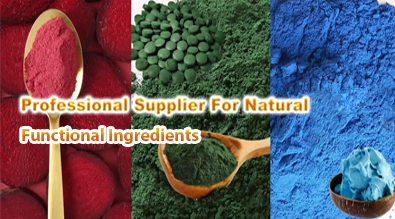
Who we are
